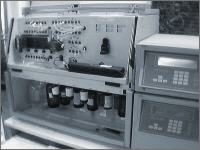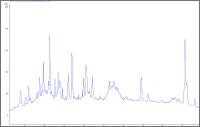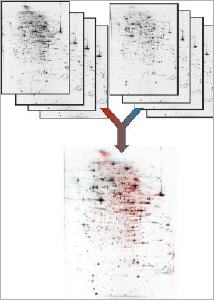Professional Protein Sequencing Service
N-terminal and internal protein sequencing

N-terminal proteins sequencing using a Procise Edman Sequencer
Proteome Factory performs N-terminal protein and peptide sequencing by using two ABI Procise Model 494 Edman Micro Sequencers connected to ABI Model 140C PTH Amino Acid Analyzers.
The N-terminal sequencing of proteins and peptides is processed according to a chemical reaction cycle developed by Pehr Edman. In the first step the free N-terminal amino acid is converted by phenylisothiocyanate to its phenylthiocarbamoyl derivative under mild alkaline conditions. Then this derivative of the N-terminal amino acid is cleaved as a thiazolinone derivative under acidic conditions. After extraction this thiazolinone amino acid it is converted to the more stable phenylthiohydantoin amino acid derivative that can be identified by using chromatography. This procedure is repeated for identification of the next amino acid.
Fee-for-service: N-terminal sequencing
Proteome Factory offers N-terminal sequencing for proteins and peptides. The samples can either be lyophilized, in solution or blotted on to PVDF membrane. Depending on sample amount, amino acid sequence and customer’s needs 5 to about 40 amino acid residues can be N-terminally sequenced.
Information about prices and sample requirements for N-terminal sequencing of proteins and peptides are shown here: N-terminal sequencing
Our N-terminal Edman amino acid sequencing sample submission form can be downloaded here
.
Fee-for-service: N-terminal protein sequencing

Internal protein sequencing Internal sequencing of proteins is performed after enzymatic or chemical protein cleavage and reverse phase separation and fractionation of the generated peptides followed by N-terminal peptide sequencing.
Internal protein sequencing is offered as fee-for-service. Protein samples can either be lyophilized, in solution, in gel bands or blotted on PVDF membrane. The internal sequence analysis provides high-valued information for sequence analysis and characterization of complete proteins. In addition it is often performed if sequence information of N-terminally blocked proteins are required.
Depending on the requested type of analysis proteins are cleaved with one or more enzymatic or chemical cleavage methods to generate overlapping peptides. The proteolytic peptides are separated by an Agilent 1100 Capillary HPLC system and fractionated by a micro fraction collector in volumes of a few to 100 microliter to ensure highest sensitivity. In parallel the eluate is monitored by ESI-MS for peptides of interest. Next peptide fractions are analyzed by N-terminal Edman peptide sequencing. The MS analyses can be either only for determination of peptide masses or for structural evaluation of peptides by de novo sequencing using MSMS analyses.
The combination of N-terminal sequencing and MSMS analyses using nanoLC-ESI-MSMS has shown significant advantages in characterization of post-translational modifications and, especially, in sequence analysis of complete proteins which have an unknown amino acid sequence.
